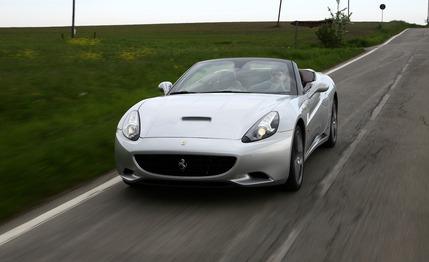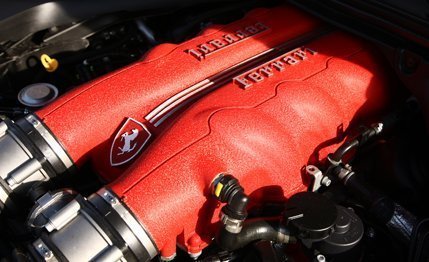
 First Drive Review
First Drive Review
After a morning spent driving the revised-for-2013 Ferrari California in and around Maranello, we’re sitting in a cramped storage/conference room in a nondescript building near the company’s fabled factory gate. Test driver Raffaele De Simone wants to know what we think of the two cars sitting outside. Our take: There’s a noticeable difference between the car equipped with the new Handling Speciale package and the non-HS 2013 California—but that difference is small. “Good,” he says. “We didn’t want them to be too different.”
To understand why Ferrari chose to limit the differences between the cars, however, we must first learn about the clienti for whom this model is intended.
It’s a Ferrari, and Everyone Knows It’s Fast
In the California’s first three years, 70 percent of buyers were new to Ferrari. Offering everyday usability with its all-weather retractable hardtop and large-for-a-Ferrari trunk—a fifth of owners use their car on a daily basis, which is 50 percent more than the brand’s average—the car is tuned softer than the rest of the Ferrari range. Buyers get Ferrari performance, a Ferrari badge, and everything else that goes with the ownership experience, but the car isn’t an inconvenience for them. It’s civil. In Ferrari’s words, the California offers ingress and egress similar to that of “a normal car.” Imagine that.


And although it’s somewhat hard to believe, a majority of buyers claim they bring their kin (plural) along. Since an adult could really only fit their head in the tiny rear seats, Ferrari says that they’re best for emergency use or kid storage. If you don’t anticipate either in your future, then it’s probably best to order your California with the available rear parcel shelf instead.
There’s Always Room for Faster
A minority, but apparently a vocal one, wanted more power. Cue upgrades for the fantastic-sounding 8000-rpm V-8: a one-way reed valve in the crankcase that lets blow-by gas and oil escape, thereby reducing pumping losses; new exhaust manifolds that reduce backpressure; pistons with revised crown machining to match the other changes; and new ECU tuning. The net is 483 hp (an increase of 30) and 372 lb-ft of torque (up 14).